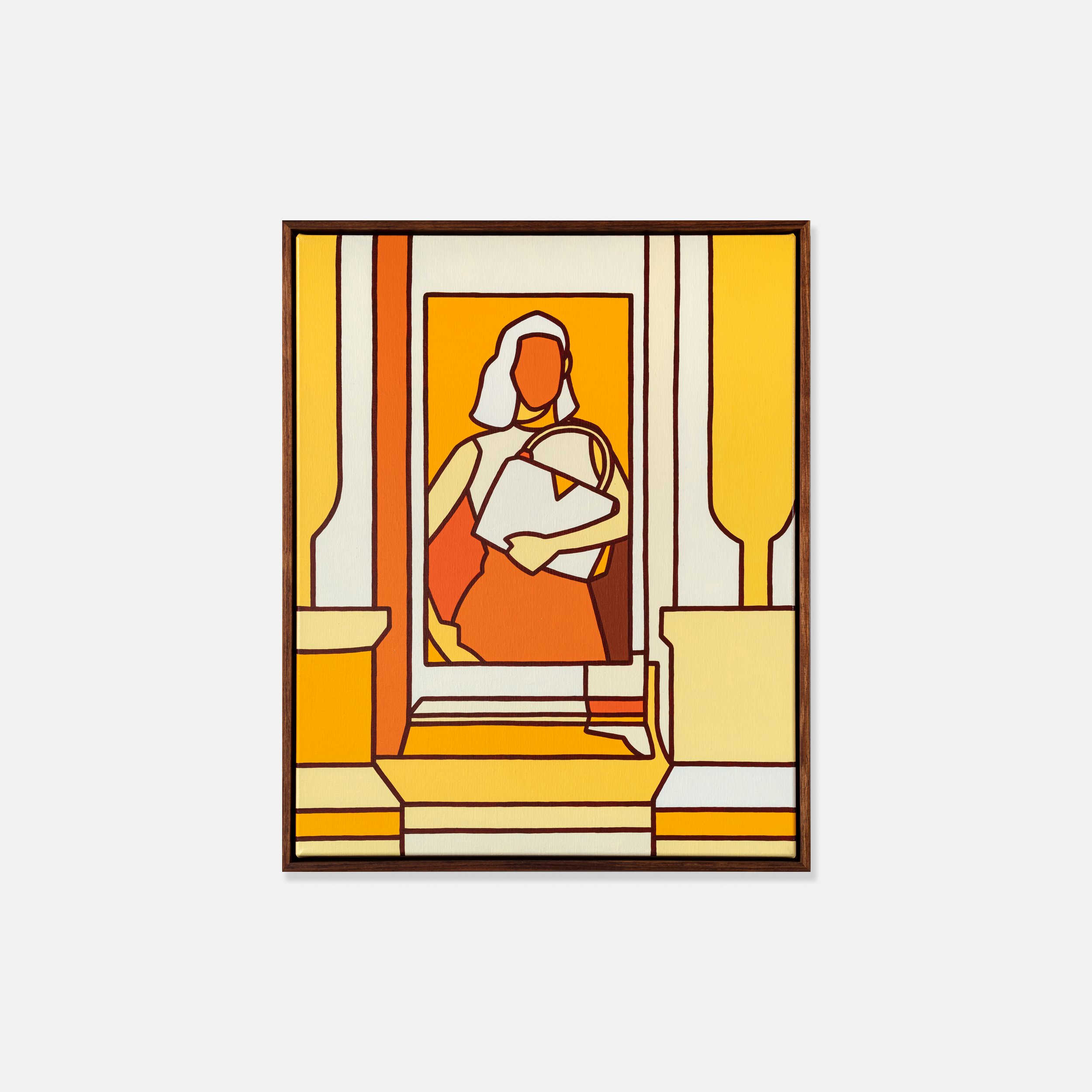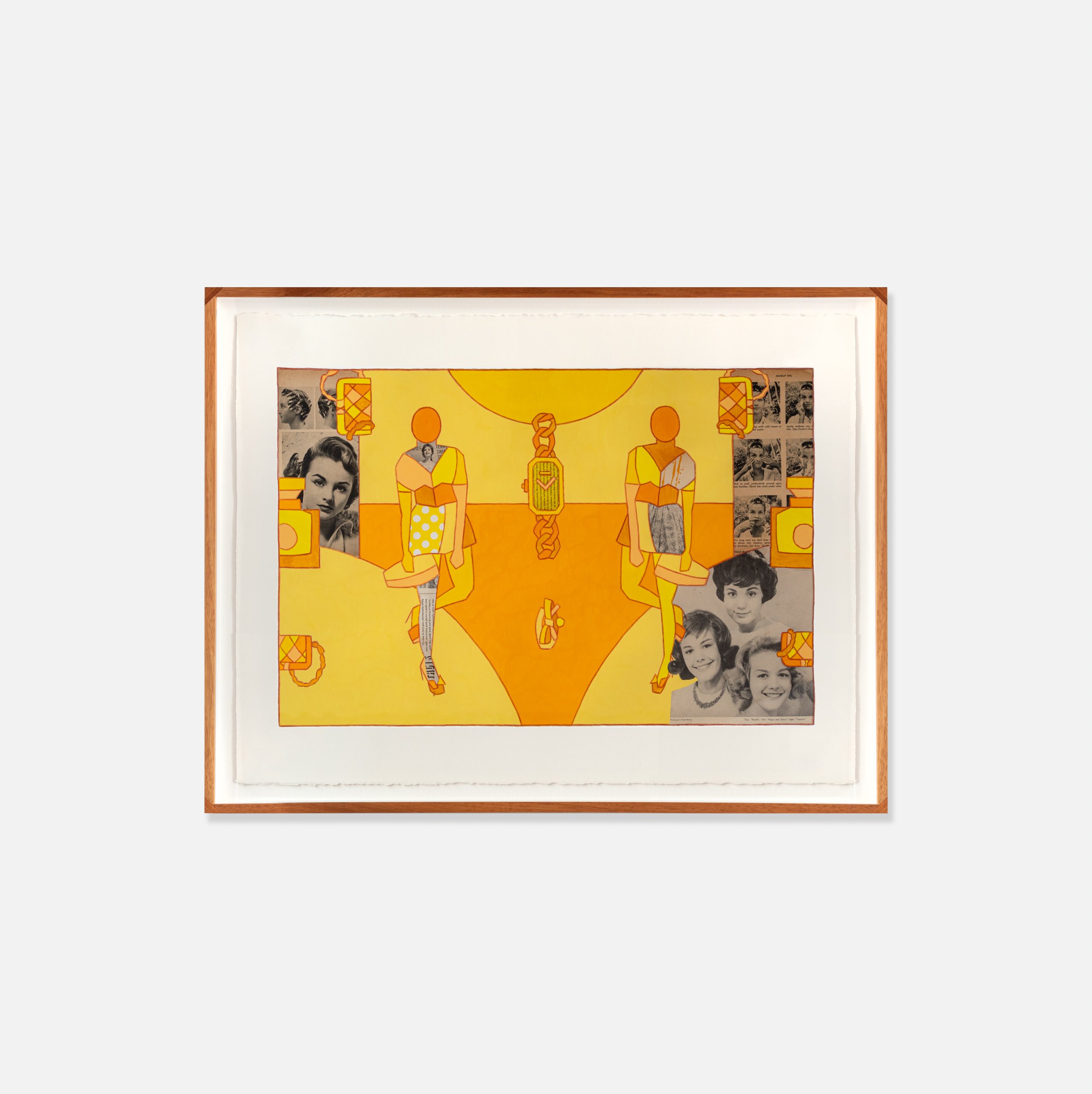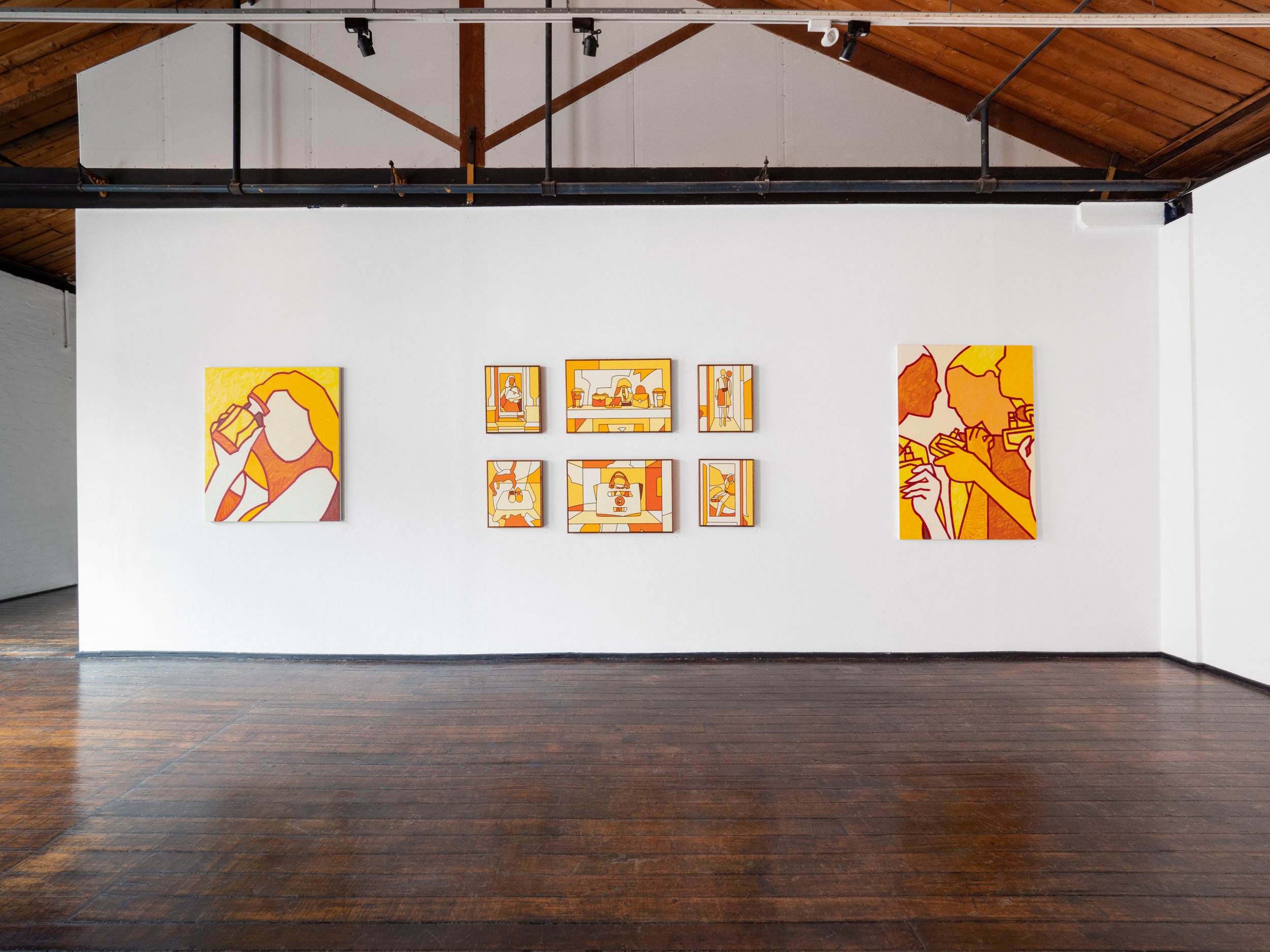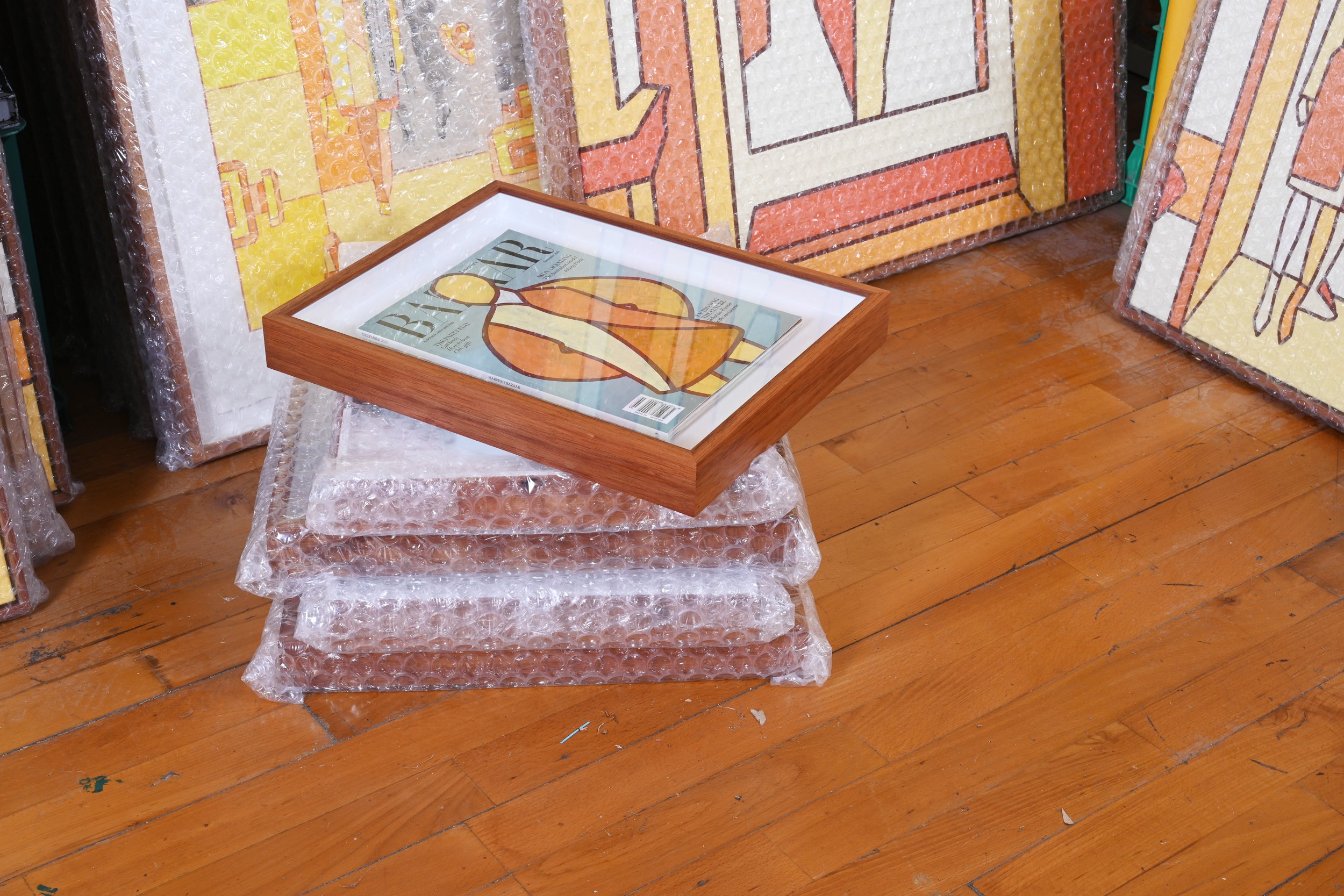STEPHEN BAKER
PARIS END
11.03.2022 ~ 27.03.2022
Stephen Baker is known for his visually appealing and joyfully coloured scenes, which are an invitation to momentarily escape reality and delve into a fictitious world of humorous and sentimental contemplation of the human experience and the world around us.
Baker's works are a triumphant expression of the fundamental design principle that simplicity is an influential factor in the language of universal visual communication. Through his process of reducing elements from his compositions to their minimum, Baker draws our attention to observable quantities in familiar scenes of our physical environment and daily lives. This unique visual language offers glimpses of previously hidden perspectives that are easily overlooked on a day to day basis or get lost amongst the noise of modern life.
In this series, Baker has turned his keen sense of observation to the world of High Fashion. Intentional daily trips to photograph and document the storefronts and window displays lining the 'Paris End' of Collins Street Melbourne, and a growing collection of magazines, became the starting point for Baker's exploration. After repeated exposures to these carefully curated scenes in print and shopfront window, Baker felt an alluring sense of enchantment and disillusion in equal measure.
This perception leads Baker on a path of further investigation into the capitalist perception of Opulence as a cultural and societal signifier and its overuse in the visual language of High Fashion branding and the science of visual merchandising. These aspirational luxury worlds are only obtainable through ownership of an item or brand signifier, should your economic position allow it. This realisation led to a creative impulse to strip these scenes of their associated branding and slogans to reveal what their core aesthetic alone communicates.
"I wanted to bring out the somewhat ridiculousness of these repetitive scenes to illustrate their 'fake-ness' and disconnection from reality. I became interested in the 'sell' of the lifestyle these images portrayed and how they presented this as aspirational to make us want these products and the suggested lifestyle that comes with them. I am used to creating scenes in my work that are an invitation to escape for a moment of respite from daily life. The more I was consuming these high fashion scenes and removing different elements from them, I started to feel there is a similarity in the 'Escapism' contained within these windows and advertisements to that in my work. I began to enjoy that about them.”
The works in this exhibition are an invitation to make comparisons between the world we live in and the world that's being presented to us through the lens of high fashion opulence and aspirational advertising.
The selected colour palette of varying yellows and oranges which dominate the works in ‘Paris End’ are a reflection of the liquid hues commonly found in bottled perfumes, both vintage and contemporary. The compositions are all directly referencing scenes uncovered during his explorations of page and footpath or are carefully selected visual elements from multiple scenes reconstructed in the artists own designs. The collection of works also sees the inclusion of a diverse range of techniques and materials new to Baker’s oeuvre.
The work ‘Mother and Child’ is a large rectangular canvas in oil of a hooded figure lovingly caressing a perfume bottle in a bold Alizarin Crimson outline and hues of oranges surrounded by a Light Cadmium yellow. The pose of the figure and Bakers chosen ‘frame’ of the image show similarities to religious portraiture, particularly poses used in 15th-16th century oil paintings of Saint Mary Magdalene by artists such as Carlo Dolci (1616-1686) and his followers. Each segment of the work is rendered in opposing directional textural strokes reminiscent of those used by post-impressionist oil painters like Van Gogh and his contemporaries. This heavily textured background is a new technique Baker developed for ‘Paris End’. Previously working with acrylic and canvas to achieve flatness this new stroke adds a gestural dimension to the works.
A series of six works in pencil on paper are pared back scenes taken from current fashion editorial photographs illustrated in a style reminiscent of early 20th century fashion illustrations used on the covers of the first vogue magazine and as design sketches in ateliers and courture houses by artists such as George Barbier (1882~1932), F.X. Leyendecker (1876~1924) and Helen Dryden (1882-1972). The compositions baker has used are heavily influenced by those used in Art Nouveau poster design by artists such as Alphonse Mucha (1860~1939) and in the paintings of French artist Henri de Toulouse-Lautrec (1864~1901). A comically sprawled recumbent figure clutching a handbag drapes poolside, two lovers caught deep in each others attention with handbag present, a stylish figure with handbag reclining against an automobile, all sound ridiculous when read aloud but through Bakers lens each work maintains a surprising balance of humour and luxury.
The series ‘Possessions’ are illustrated compositions in pencil and gouache with carefully selected scenes from black and white vintage fashion magazines composed strategically throughout each composition. At first glance the works may seem visually complex, as Baker has deconstructed thousands of scenes observed during his exploration in to their individual parts and then through careful consideration reconstructed the stolen images to create new original compositions. Bakers keen understanding and appreciation for graphic design principles is on full display, each work a masterful example of the power of balance, hierarchy and the use of negative space in successful visual communication. The symmetry within the layouts here also are strongly reminiscent of those found in religious iconography and in particular the techniques used in the craftsmanship of stained glass windows depicting religious scenes. These works push us to further question the effect that the repetitive nature of High Fashion design across decades has had upon our collective psyche. These illustrations follow a religious-like order which is used to reflect back upon us our position as ‘under god’, or in the world of fashion you can elevate yourself from this ‘under’ position through material ownership.
A series of Fashion editorial magazines framed in blackwood with the central figures of the cover hand-painted over in thick gestural strokes of acrylic are a shining example of Baker’s ability to simply communicate his conceptual musings to his audience. The fashion editorial ‘Cover Image’ is an iconic and integral part of the fashion world. In these works the prominence of Instantly recognisable editorial brands such as Elle, Vogue, Esquire and their featured celebrity cover models are stripped of detail. The usual brand names, slogans and the recognition of familiar faces are replaced with simple, colours, lines and shapes. But not entirely, Baker leaves some strokes lighter in certain sections to allow us to catch glimpses of the familiar which lies underneath. Instead of the front cover images we find instantly recognisable from these iconic brand names we are presented with simplicity and the proposition to consider what values we assign to our perceptions of the human icon and the process of attaining our own cover image status.
The works in ‘Paris End’ are a conceptual and technical evolution in Bakers expression of his philosophical musings on modern day to day life and the world around us. Through the simplification of the visual cues contained in these scenes Baker has successfully removed the ‘sell’ of these images to present works that portray the visual aesthetic of luxury, opulence and escapism of High Fashion without the science and psychology of commercial branding and marketing. Through his process of simplification the inherent beauty in the forms of these scenes of aspirational and sometimes toxic images of opulence and escapist retail fantasy is revealed.



















































